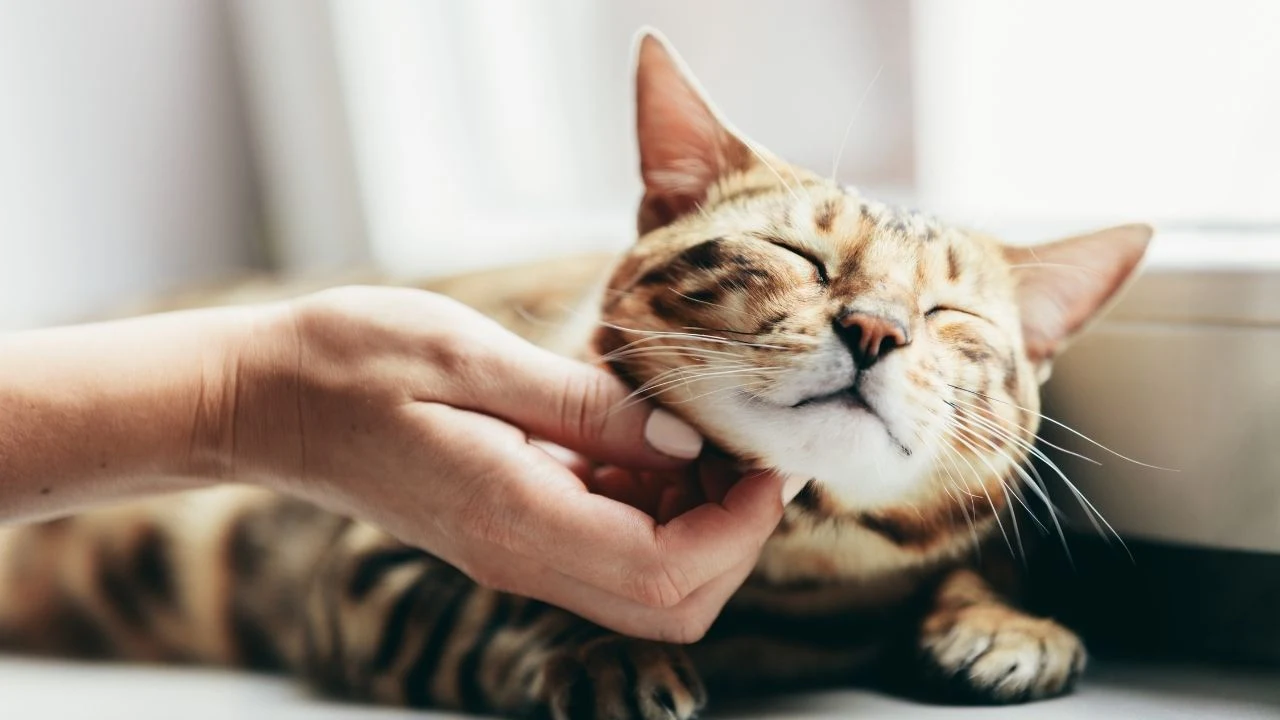
|
It's a myth that going outside is a requirement for feline happiness. Playing regularly with a cat and providing entertaining toys can easily satisfy their stalking instinct, keep them stimulated, and provide the exercise they need to stay healthy and happy. It also keeps local wildlife safe!
Here are some tips for making the great indoors an interesting, feline-friendly environment that meets all of your cat's needs.
Start young.
Kittens who are kept indoors are usually happy to stay there as they grow up.
Good fences = happy kitties.
Provide a screened porch for your cat to experience the outdoors safely. Consider building or purchasing a 'catio' or similar enclosure to allow your cat to get a taste of the outside without the risks. A regular fence may not prevent other animals from entering your garden, so you should always be present when you allow your cat outside.
Be sure to cat-proof the garden by checking that your fence has no escape routes and by making toxic plants, garden chemicals and other dangerous objects inaccessible.
Walk this way.
If you live in a peaceful neighbourhood in which you can walk without encountering loose dogs, consider buying a harness and training your cat to walk on a leash. This training takes time and patience, for both you and the cat, and it's easiest when your cat is young. Some cats can even be harnessed and tied to a stationary object to enjoy the outdoors while you are gardening nearby (but be sure to never leave your cat alone while they are tethered).
Hang out.
Install a perch indoors near a sunny window; padded perches can be purchased at many pet-supply shops, through catalogue retailers or online. Another option is an enclosure that sits in a window frame (much like an air-conditioning unit) and provides a secure space in which your kitty can hang out. Larger perches can attach to the side of a house or ground-floor apartment patio.
Tree's company.
Buy a ready-made cat tree (often called a kitty condo), or make your own. A cat tree can be short, or may stretch from floor to ceiling. It provides great climbing opportunities and, in multi-cat households, creates more play and rest areas by taking advantage of vertical space. If you can, locate the cat tree next to a window so your cat can watch the action outdoors.
Play Time
Play with your cat each day. Try different types of toys that allow your cat to stalk, chase, pounce and kick. When you've tired out your cat, store toys that could harm them (such as toys with strings attached) out of reach. When you can't be there to supervise, leave out 'toys' such as paper bags (with the handles removed) or cardboard boxes. Be sure to switch the toys from time to time so that they seem 'new' and more interesting to your cat.
Bring the outdoors in.
Plant cat grass (available from pet-supply shops) in indoor pots so your feline can graze.
Clean house.
Clean the litter box regularly.
ID, please!
Even indoor cats should still be outfitted with a collar and visible identification. The occasional open window (make sure your windows have secure screens) or door offers a tempting opportunity for your cat. Also, your cats may become frightened and make their way outside if strangers come to work on your house or if there is a fire or similar disaster. The collar and visible ID could help someone get your pet back to you.
Chip in for safety.
For extra insurance, consider having your cat microchipped, and keep your contact information with the microchip registry up to date. If you do lose your cat, contact your local animal shelter or local government authority immediately to file a report. Shelter workers can give you tips on getting your pet back home safely.
Reference:
Humane Society of the United States (HSUS). (Revised 2019). 10 tips to keep your cat happy indoors. Retrieved 25 September 2019 from https://www.humanesociety.org
